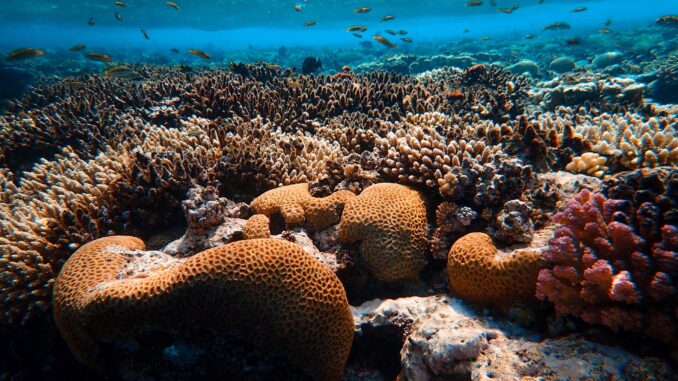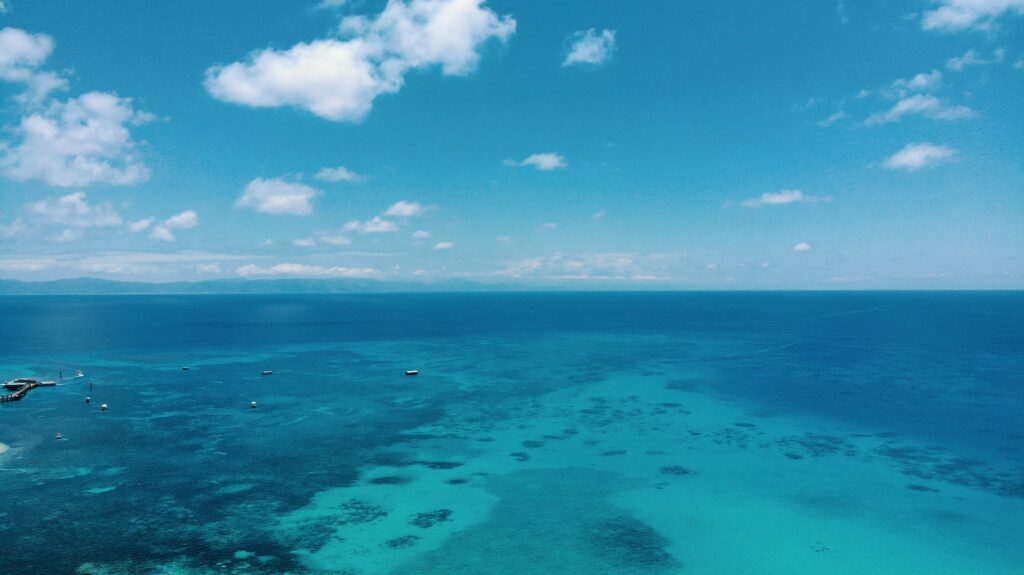
The fertilization of corals points towards a flourishing reef despite climate change.
-Sabah Ahmed, Toronto.
Scientists witnessed a miraculous show of colour when the endangered Great Barrier Reef in the Pacific Ocean gave birth to millions of coral offspring in the past two days.
On Tuesday, the spawning event began after a few years of what were regarded as “life-threatening” for the coral reefs. Climate change caused the ocean water to turn exceptionally warm in 2016, 2017, and 2020, destroying two-thirds of the coral reefs. According to a study, the persistent climate changes caused around 14 percent of the world’s coral to die globally.
The annual spawning event, where thousands of corals cast sperms and eggs in white, yellow, orange, and red shades into the Pacific Ocean, lasts three days. The Barrier has been listed as the World Heritage natural wonder for 40 years, and the fertilization shows that the Barrier is recovering despite the recent bleaching. Due to warmer weather, the corals eject the algae, causing them to become white. With extended bleaching, the corals starve and die. Scientists are hopeful that further protection will help the Barrier flourish once again.
The Great Barrier covers an area of 1400 miles off the coast of Queensland and is known for its biodiverse ecosystem. It is home to a unique marine and plant life – the endangered large green turtle being one. The Great Barrier Reef homes 400 coral species, dugong and humpback, and dolphins. There are around 242 bird species and 22 seabird species.
Three thousand individual reefs make up the Barrier. The complex interaction of different species and their unique survival mechanisms make it one of the most complex and diverse marine systems. The reef also protects against oceanic storms. With the abundance of species and colours, the reef attracts worldwide attention from scientists, tourists, and divers alike.
United Nations Science and Culture agency highlighted that the Great Barrier Reef was suffering considerably due to constant climate and water quality changes in June this year. However, its suggestion to list the most extensive coral system “in danger” was met with criticism from Australia. The existing damage to the reef and its status will be re-evaluated next year.
Researchers and scientists have warned of considerable damage to the reef system in the past if the greenhouse emissions continue at the same rate. However, they also suggested that the underwater ecosystem can thrive with adequate care and protection. The recent fertilization hints towards a flourishing Barrier.
Despite its scientific, ecological, and environmental significance, the Barrier faces many risks from ongoing tourism, construction of ports, and climate changes. Weather changes cause disturbances such as an influx of freshwater and cyclones, affecting the biodiversity of the reef and its varied species.


Be the first to comment